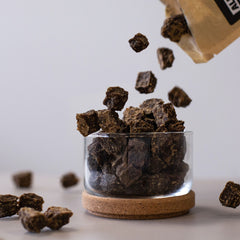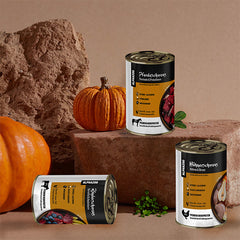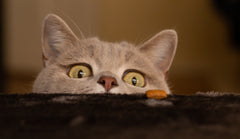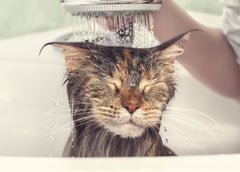Cats purr: The secret language of the velvet paws
Cats and their soothing purr – for many, a symbol of contentment and harmony. But did you know that purring isn't always just an expression of happiness? There's much more behind this fascinating sound. Dive into the world of purring cats with us and learn what it means when your cat purrs.
Why do cats purr? The different meanings
Purring is a versatile form of communication for cats. They purr to express their feelings, to calm themselves, or even to relieve pain.
Possible reasons for purring:
- Contentment: The most common reason why cats purr.
- Stress management: Cats also purr in stressful situations to calm themselves down.
- Pain relief: Purring can have healing effects because the vibrations have positive effects on the muscles and the healing process.
- Communication: Cats use purring to interact with humans or other animals.
When do cats purr? A look at the situations
Cats purr at different times, and each situation has its own meaning.
1. While cuddling with you
- Meaning: Your cat feels safe and shows you its affection.
- Note: If she half closes her eyes, she is particularly relaxed.
2. When eating
- Meaning: Satisfaction and joy about the food.
- Note: Some cats purr to show their gratitude.
3. In stressful moments
- Meaning: Purring helps the cat to calm down.
- Note: Pay attention to whether the cat shows other signs of stress, such as hidden behavior.
4. When visiting the vet
- Meaning: Calming in an unpleasant situation.
- Note: Purring can also be a sign of fear.
The science behind purring: How is the sound created?
Purring is a complex process that takes place in your cat's body.
How does it work?
- Your cat's vocal cords vibrate in a specific rhythm.
- This vibration is caused by the interaction of the larynx and diaphragm muscles.
- The sound is produced both when inhaling and when exhaling.
The frequency of purring:
- Cats purr in a frequency range of 25 to 150 hertz.
- These frequencies have proven calming and healing effects.
What does it mean when cats purr? A look at the emotions
Cats express not only contentment through their purring, but also a variety of emotions.
Positive emotions:
- Security: Your cat feels safe.
- Joy: She shows you that she is happy.
Negative emotions:
- Pain: Some cats purr to relieve pain.
- Anxiety: Even in stressful situations, cats purr to calm themselves down.
How can you recognize the emotions?
- Body language: Look at the cat's posture. A relaxed purr is often accompanied by half-closed eyes and calm breathing.
- Environment: Consider whether the situation is positive or stressful for the cat.
Myths and facts about purring
There are many myths about cat purring. Here are some truths and misconceptions:
Myths:
- "Only happy cats purr." False! Cats also purr when they're scared or in pain.
- “All cats purr the same.” Not all cats purr the same loudly or with the same frequency.
Facts:
- Purring can have healing effects.
- Cats purr even as babies to signal to their mother that they are content.
Frequently asked questions about purring
“Do all cats purr?”
Most cats purr, but not all. Some breeds or individuals purr more quietly or less frequently.
“Can purring promote healing?”
Yes, studies show that purring frequencies can have a muscle-relaxing and healing effect.
“Why doesn’t my cat ever purr?”
Some cats purr rarely or only quietly. This doesn't mean they're unhappy—every cat is different.
“Is purring always a good sign?”
No, pain or stress can also cause purring. Pay attention to other cues, such as your cat's body language.
How can you encourage your cat to purr?
Tips for a purring cat:
- Create a relaxing environment.
- Cuddle with your cat if she likes it.
- Offer her food or treats that she loves.
Conclusion: Cats purr – a fascinating means of communication
Your cat's purring is much more than just a sound. It's a form of communication, comfort, and even healing. The key points at a glance:
- Why do cats purr? Contentment, calmness, communication.
- When do cats purr? When cuddling, eating, or during stressful moments.
- What does purring mean? It can represent both positive and negative emotions.
- How does it occur? Through vibrations of the vocal cords at a frequency of 25 to 150 hertz.
With these insights, you can better understand your cat's behavior and strengthen your relationship. Purr-fect times await you!
















